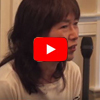A Recipe for the Eucharistic Life
Blog / Produced by The High Calling
On Valentine’s Day I asked my husband what was his most-favorite-most-romantic-date-in-the-whole-wide-world-ever. He thought about it for a while and when he seemed absolutely stumped, I teased, you used to be so romantic! But he wasn’t done thinking and when he was, he reminded me of our first date—how he drove me to the little town where he grew up. How, that night under a smiling moon, he told me about his childhood. How we stood on the banks of the lake he used to mow as a teenager. How he held my hand for the first time on the banks of that little lake.
I just like to be with you, he said. I just like to talk to you.
So we went to get some Buffalo chicken wings and a couple beers and talked all night.
Being yoked to someone changes so much. I think about this as I read Mary Kenagy Mitchell’s essay, Common Elements.
Ms. Mitchell tells the story of her first Lenten Eucharist as a new bride. Giving up parts of her pre-married life left an emptiness that made room for the awareness of the common beginnings of the bread and wine--thus lending a fuller appreciation of the transformation they undergo as sacrament.
…Ordinary food is the raw material for the event that stands at the foundation of the Christian life. I had known this before, but that Lent, fasting…cleared a space for me to take this knowledge in more deeply. The absence of the visual beauties of a cathedral worked the same way, making me alive to the beauty of a well-worn human voice and of the bare words of the liturgy itself. Hunger reminded me of the place of ordinary food—bread made by hands, gift of the earth—in the mystical feast. The common elements are folded into the holy drama, but if they didn’t also remain food and drink, we couldn’t take them into ourselves.
At the end of her essay, Ms. Mitchell gives her philosophy on salad dressing:
My favorite salad dressing is very simple…A good, serviceable salad dressing, the kind that holds a salad together without making a spectacle of itself, really needs only four ingredients: oil, vinegar, salt, and pepper.
She goes on to describe how, with special additives—such as herbs, or flavored vinegars, or even avocado—these common ingredients are transformed into something uncommonly good. It strikes me that the body of her essay follows a similar recipe--the common transformed into the exceptional.
In his essay, The Eucharist, Alexander Schmemann takes us deeper into this sacrament.
…The time has come now to offer to God the totality of all our lives, of ourselves, of the world in which we live. This is the first meaning of our bringing to the altar the elements of our food…We also know that to offer this food, this world, this life to God is the initial “Eucharistic” function of man, his very fulfillment as man. We know that we were created as celebrants of the sacrament of life, of its transformation into life in God, communion with God. We know that real life is “eucharist,” a movement of love and adoration toward God…
Real life is eucharist.
I could not read these two essays without thinking of the journey our dear friend Ann Voskamp chronicles in her book One Thousand Gifts: A Dare to Live Fully Right Where You Are.
In the story of the Last Supper in the book of Luke, the original language for “he gave thanks” reads “eucharisteo”, Ann says.
The root word of eucharisteo is charis, meaning “grace.” Jesus took the bread and saw it as grace and gave thanks. He took the bread and knew it to be gift and gave thanks… Eucharisteo, thanksgiving, envelopes the Greek word for grace, charis. But it also holds its derivative, the Greek word chara, meaning “joy”…Deep chara joy is found only at the table of the euCHARisteo— the table of thanksgiving…”
Ann calls these a threefold cord that might hold a life: grace, thanksgiving, joy. Eucharisteo.
If ordinary food is the raw material for the divine sacrament of the Lord’s Supper as Mary Kenagy Mitchell says, might not our ordinary moments be the raw material for living that divine life—that Eucharistic life? If so, what are the additives that transform these ordinary raw materials?
Luci Shaw, in her essay Soul Food, has some suggestions.
Though I’d been adequately fed, housed, and educated, I lacked spiritual and emotional nourishment; I longed for unconditional love…
Shaw’s parents were of devout faith—staunch missionaries who took a no-nonsense view of faith. Yet, their daughter was left longing for more.
…Communion was meant not only for body, but for soul nourishment. Somehow, though, this sense of Communion didn’t translate to my childhood. I longed for love, mother love, not based on how “good” I was or how well I succeeded, but a tender, loving maternal care…
Could unconditional love be one of those additives that transform our recipe from the common life to the exceptional?
I still hunger for emotional and spiritual nourishment, and I occasionally grimace as I think back on my mother’s rules and unrealistic expectations. When I take Communion in my Episcopal Church, I go to kneel at the altar like a hungry baby bird, or like the widow in the Jesus story who was willing to eat the crumbs that fell from the table to the floor. I am ravenous for the food dealt out in wafer and wine, in the circle of the loving presence of Christ, with others who are also starving for this inner nourishment, the kind that finally assures me of an unconditional love.
Grace, joy, thanksgiving, and unconditional love. When I mix all these ingredients into the batter of life, all of those ordinary moments become holy. Even an evening of chicken wings and beer.
If you would like to join in the conversation at your blog, please add your link below:
This is week eight of our book club discussion on The Spirit of Food: 34 Writers on Feasting and Fasting toward God, edited by Leslie Leyland Fields. Join us every Monday morning as we dig into this feast! Next week we discuss two more of these lovely essays: A Blessing for the Rice Cracker and On Charon's Wharf.
Photo by viliki used with permission via Flickr. Post by Laura Boggess, author of the Wings of Klaio series.





